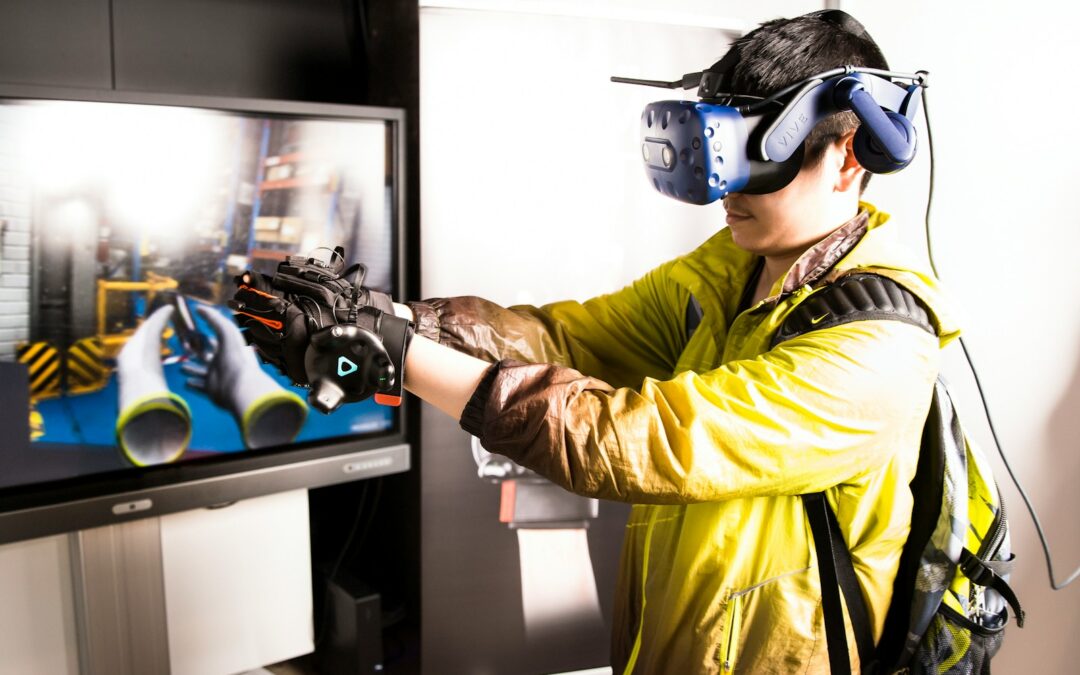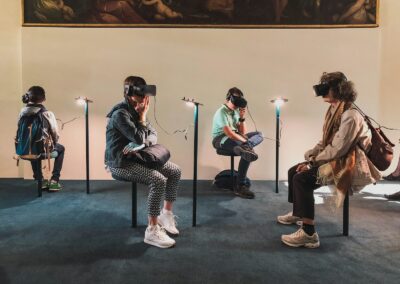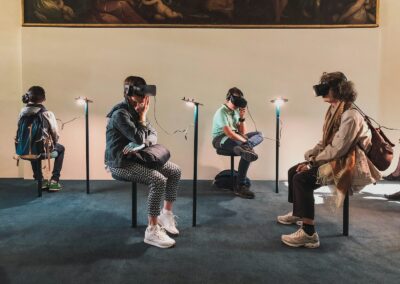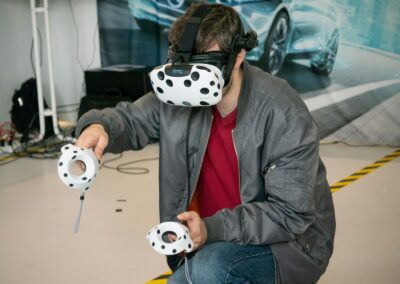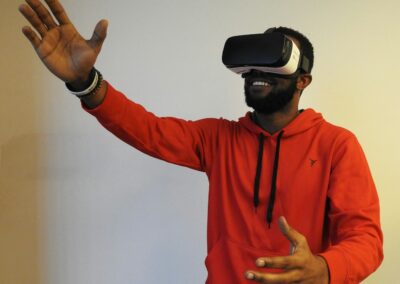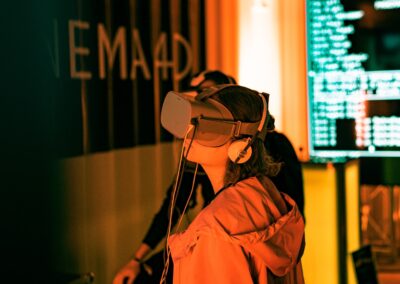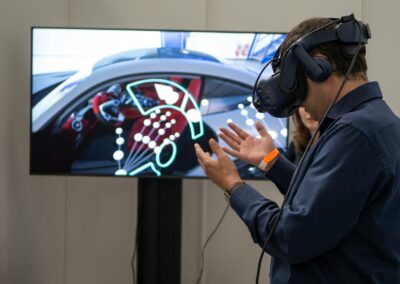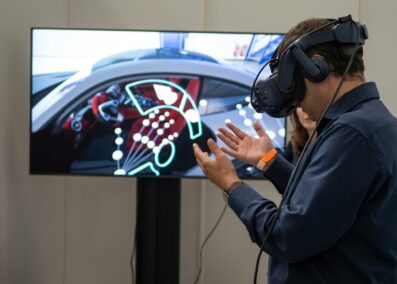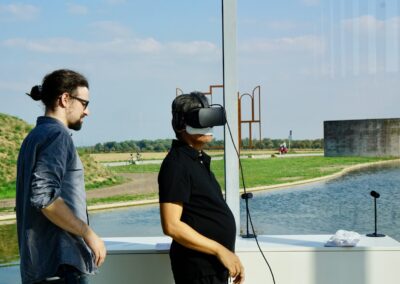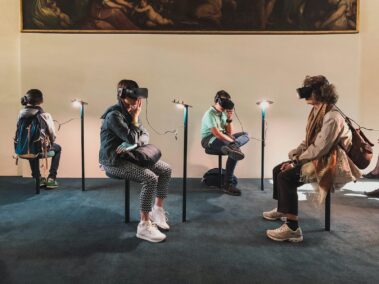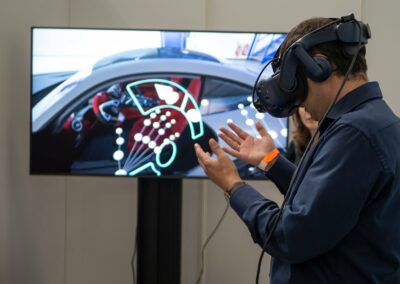Transforming Entertainment with Augmented Reality and Virtual Reality
Introduction to AR and VR Technologies
The integration of Augmented Reality (AR) and Virtual Reality (VR) technologies is significantly reshaping the entertainment and gaming industries. These technologies offer immersive experiences that go beyond traditional media, providing users with interactive and engaging environments. In regions such as Saudi Arabia and the UAE, where technology adoption is rapidly accelerating, AR and VR are emerging as critical drivers of innovation and business success.
AR enhances the real world with digital overlays, allowing users to interact with virtual elements while remaining aware of their physical surroundings. VR, on the other hand, creates entirely virtual environments that users can explore and interact with. Together, these technologies offer unprecedented opportunities for entertainment and gaming companies to create unique and compelling experiences.
For example, VR can transport players into fantastical worlds, making them feel as though they are part of the game. AR applications can integrate game elements into the real world, blending virtual and physical realities. These advancements are not only attracting more users but also setting new standards for engagement and interactivity in the entertainment industry.
Impact on the Gaming Industry
The gaming industry is experiencing a revolution due to the influence of AR and VR technologies. Augmented Reality and Virtual Reality in Entertainment are transforming gameplay by offering more immersive and interactive experiences. Traditional gaming, which often relies on static screens and controllers, is evolving into dynamic experiences where players are physically and emotionally engaged.
VR gaming allows players to step into virtual worlds, providing a level of immersion that traditional gaming cannot match. Games such as Beat Saber and Half-Life: Alyx have demonstrated the potential of VR to create compelling, interactive environments where players can physically move and interact with the game world. This immersion not only enhances the gaming experience but also opens up new possibilities for game design and storytelling.
AR games like Pokémon GO have proven that blending digital elements with the real world can create engaging and social experiences. Players explore their real-world surroundings while interacting with virtual objects and characters. This integration of physical and digital worlds not only increases engagement but also encourages physical activity and social interaction among players.
Opportunities for Business Growth and Innovation
The integration of AR and VR technologies presents significant opportunities for business growth and innovation in the entertainment industry. Companies in Saudi Arabia and the UAE are increasingly investing in these technologies to stay competitive and meet the growing demand for advanced entertainment experiences.
For businesses, AR and VR offer new revenue streams and market opportunities. Companies can develop VR experiences for theme parks, museums, and other attractions, providing visitors with immersive experiences that enhance their overall enjoyment. AR applications can be used for marketing, allowing brands to create interactive advertisements and promotional campaigns that engage consumers in novel ways.
Moreover, the use of AR and VR technologies can lead to the development of new business models and partnerships. Collaboration between technology providers, entertainment companies, and content creators can drive innovation and create unique experiences that attract and retain customers. For instance, partnerships between VR hardware manufacturers and game developers can lead to the creation of exclusive content and experiences that differentiate a company in a crowded market.
Challenges and Future Directions
Addressing Technical and Financial Challenges
While the potential of AR and VR technologies is immense, there are several challenges that need to be addressed. One of the primary concerns is the high cost of developing and implementing AR and VR solutions. The cost of VR hardware, software development, and content creation can be prohibitive for many companies, particularly smaller businesses and startups.
To overcome these financial barriers, businesses can explore cost-effective solutions such as using off-the-shelf AR and VR platforms, collaborating with technology providers, and leveraging existing infrastructure. Additionally, as AR and VR technologies continue to advance and become more widely adopted, costs are expected to decrease, making these technologies more accessible to a broader range of businesses.
Technical challenges also pose a significant hurdle. Ensuring seamless and high-quality experiences requires robust hardware and software solutions, as well as addressing issues related to latency, resolution, and user comfort. Companies need to invest in research and development to overcome these challenges and deliver reliable and enjoyable AR and VR experiences.
The Future of AR and VR in Entertainment
Looking ahead, the future of AR and VR in the entertainment industry is promising. As technologies continue to evolve, we can expect to see even more innovative applications and experiences. Advances in hardware, such as lighter and more comfortable VR headsets, as well as improvements in AR glasses and sensors, will enhance the overall user experience and broaden the potential applications of these technologies.
The integration of AI with AR and VR can further amplify their impact. AI-driven algorithms can create more realistic and adaptive virtual environments, while machine learning can personalize experiences based on user behavior and preferences. This synergy between AI, AR, and VR will enable the creation of highly tailored and immersive experiences that cater to individual needs and interests.
Additionally, the growing popularity of the Metaverse, a collective virtual shared space, is likely to drive further adoption of AR and VR technologies. As the Metaverse concept becomes more mainstream, it will provide new opportunities for entertainment and gaming companies to engage users in virtual worlds and experiences that seamlessly blend with the physical world.
In conclusion, Augmented Reality and Virtual Reality technologies are set to transform the entertainment and gaming industries by offering immersive, interactive, and innovative experiences. While challenges remain, the potential for growth and innovation is substantial. By addressing these challenges and leveraging the latest advancements, businesses in Saudi Arabia, the UAE, Riyadh, and Dubai can lead the way in shaping the future of entertainment and gaming.
—
#AugmentedRealityAndVirtualRealityInEntertainment #ARAndVRTechnology #ImpactOfARAndVR #GamingIndustry #EntertainmentIndustry #SaudiArabia #UAE #Riyadh #Dubai #ArtificialIntelligence #Blockchain #TheMetaverse #ExecutiveCoachingServices #GenerativeArtificialIntelligence #ModernTechnology #BusinessSuccess #LeadershipSkills #ManagementSkills #ProjectManagement

